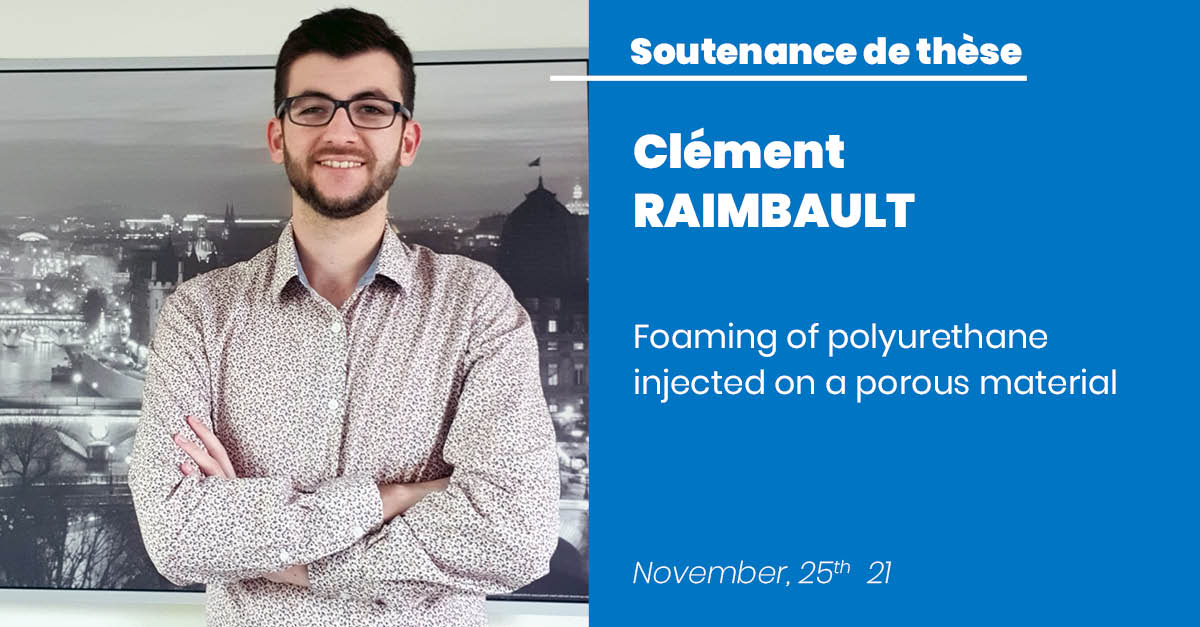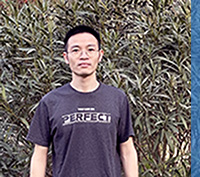PhD defence of Clément Raimbault
Clément Raimbault defends his PhD in Numerical Mechanics and Materials on Nov. 25, 2021
"Foaming of polyurethane injected on a porous material"

Clément Raimbault conducted his PhD under the supervision of Patrice Laure, Michel Vincent and Séverine Boyer. Je defends his PhD in Numerical Mechanics and Materials on Nov. 25th, 2021 in front of the following jury:
Abstract:
Polyurethane foams are sometimes combined with a porous layer to improve physical properties like sound and thermal insulation in the automotive industry. Such parts are manufactured by a reactive injection molding process, with a porous medium positioned beforehand on one of the cavity walls. A mixture composed of polyol, isocyanate and water is then injected in the closed cavity. The reaction between isocyanate and water creates carbon dioxide bubbles. Simultaneously, polymerization of polyurethane occurs resulting from the polyol and isocyanate reaction. The expanding foam fills the cavity and a part of the porous layer. The objective of this work is to develop a macroscopic model to simulate the influence of the porous medium on the mixture flow inside the cavity along with the evolution of temperature and pressure in the foam. Foam density, bubble size distribution and impregnation of the porous medium are also studied. First, foaming parameters are identified with the FOAMAT® device and experiments are performed to measure density, porosity and permeability values of a porous material. Then, foam injection tests are carried out on a stantard square mold geometry, with a porous layer on its lower wall. The cell size distribution is identified from scanning electron microscopy and micro-tomography image analyses. Numerical simulation is realized with REM3D® software. To model the foam flow in the porous medium, the Navier-Stokes-Brinkman model is coupled with the foaming model. After the implementation of this model, the upgraded REM3D® version is used to check the model by comparison with experimental data. Correlations are made between the size of bubbles, the density and temperature fields, the penetration depth of the foam in the porous medium and the permeability.
Keywords: injection, foam, polyurethane, porous, numerical simulation








